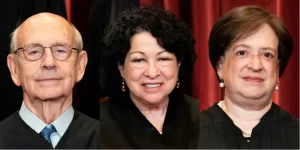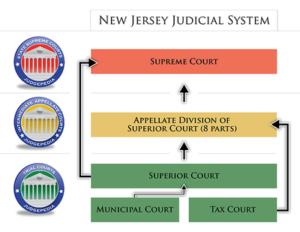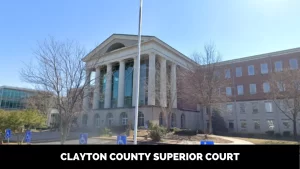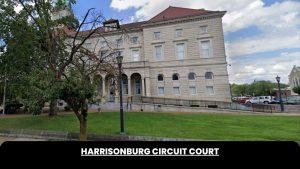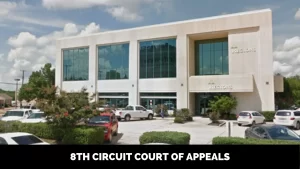District of Maryland Court
The United States District Court for the District of Maryland is one of the original 13 federal judicial districts established in the Judiciary Act of 1789. Now in its 234th year, this district has played a prominent role in some of the most significant legal proceedings in American history. Its jurisdiction covers the majority of central and western Maryland, serving millions of residents across 22 counties. The District of Maryland’s rich heritage and continuing impact provide valuable insights into the evolution of the U.S. judicial system.
History and Establishment of the District Court
On September 30, 1789, President George Washington signed the Judiciary Act created by the 1st United States Congress. This established the U.S. federal court system, including 13 original judicial districts. The District of Maryland was one of these initial 13 districts created under this landmark legislation.
The District of Maryland was authorized to hold circuit court and district court proceedings. Its jurisdiction covered what was then the entire state of Maryland. The purpose was to establish federal judicial authority over legal matters between citizens of different states, or involving the Constitution and laws of the U.S. This fulfilled a key provision of Article III in the Constitution regarding the federal judiciary.
Geographic Range of the District
Today, the District of Maryland encompasses 22 Maryland counties stretching from the west to the east of the state. It includes major population centers such as the Baltimore metro region, portions of the Capital region, and Western Maryland.
The specific counties under the court’s jurisdiction are:
- Allegany
- Anne Arundel
- Baltimore
- Calvert
- Caroline
- Carroll
- Cecil
- Charles
- Dorchester
- Frederick
- Garrett
- Harford
- Howard
- Kent
- Montgomery
- Prince George’s
- Queen Anne’s
- Somerset
- St. Mary’s
- Talbot
- Washington
- Wicomico
- Worcester
In addition, the District covers the independent city of Baltimore. Altogether, around 6 million Maryland residents live within the District of Maryland boundaries.
Courthouses and Court Locations
The District of Maryland holds court in multiple locations including its main courthouse in downtown Baltimore.
The Edward A. Garmatz United States Courthouse
The Edward A. Garmatz United States Courthouse located at 101 West Lombard Street in Baltimore serves as the main District of Maryland courthouse facility. It handles the majority of the court’s caseload. The 17-story building contains courtrooms, judge’s chambers, and offices for the court clerk, probation, and pretrial services.
Named after Congressman Edward A. Garmatz, the courthouse building was completed in 1976. It was renovated in 2001-2002 to upgrade technology systems and improve security. Today, it handles over 2,500 case filings per year on topics ranging from criminal prosecution to civil lawsuits.
Other Court Locations
In addition to Baltimore, the District of Maryland holds court proceedings at facilities in:
- Cumberland – The U.S. Post Office and Courthouse building in Cumberland serves as a Western District of Maryland court location.
- Denton – Cases are heard at the Caroline County Circuit Courthouse in Denton on the Eastern Shore.
- Montgomery/Prince George’s Counties – A court site located within 5 miles of the county line provides a closer option for these Central Maryland residents.
This allows the District Court to hold hearings and trials closer to where parties involved live. The multi-site approach improves access to justice for Maryland citizens.
Judges and Court Staff
The District of Maryland has a authorized judge count of 10. However, the U.S. Marshal position is currently vacant.
Judges are nominated by the President and approved by the Senate for lifetime appointments under Article III of the Constitution. They oversee all court proceedings, pretrial matters, and sentencing. The current roster of District of Maryland Article III judges is:
- Chief Judge James K. Bredar
- Judge George J. Hazel
- Judge Deborah K. Chasanow
- Judge Paul W. Grimm
- Judge Theodore D. Chuang
- Judge Ellen Lipton Hollander
- Judge George Levi Russell, III
- Judge Stephanie A. Gallagher
- Judge Richard D. Bennett
- Judge A. David Copperthite
In addition, there are seven magistrate judges who handle preliminary criminal proceedings and civil case matters. The District also has a bankruptcy court with four bankruptcy judges.
The U.S. Marshal for the District is responsible for court security, transporting prisoners, protecting witnesses, and seizing assets. But this position remains vacant after the previous marshal retired in 2021. Filling this important role will be a priority in the year ahead.
Notable Cases and Events
Over its 200+ year history, the District of Maryland has presided over numerous influential and historic civil and criminal court cases.
In the early 1900s, Judge Morris Ames Soper issued several groundbreaking decisions related to racial segregation and voting rights in Maryland. By 1915, he struck down the state’s controversial “Grandfather Clause” that discriminated against African American voters.
In the 1950s, Judge Roszel Thomsen heard the high-profile espionage case of Enoch Aquino and his wife Bernadette who spied for the Soviet Union. Both were convicted of treason and sentenced to prison.
More recently, the court has handled cases related to national security and terrorism. Judge Peter J. Messitte presided over the 2005 trial of Ali Al-Timimi who was found guilty of soliciting others to levy war against the United States and inducing others to use firearms in violation of federal law.
Other prominent cases have dealt with government surveillance overreach, clergy abuse, environmental laws, and public corruption. The District of Maryland strives to uphold justice and protect constitutional rights through its decisions.
How the Court System Functions
The District of Maryland is an original jurisdiction trial level federal court. It operates using systems and procedures similar to the other 92 U.S. District Courts.
Civil and criminal cases begin at the District Court level. Plaintiffs or prosecutors file complaints or charges with the court clerk. The clerk then assigns a District Judge.
For civil cases, the judge oversees pretrial conferences, motions, and discovery. For criminal cases, initial appearances, arraignments, plea agreements, and motions take place before trial.
Bench trials in which only a judge presides or jury trials with a panel of citizens selected as jurors commence if a pretrial resolution does not occur. After the trial concludes, the District Judge issues rulings, sentences, and orders remedies.
Decisions can be appealed to the higher Fourth Circuit U.S. Court of Appeals. In rare instances, cases from the District of Maryland make their way to the Supreme Court. But the District Court holds the critical role of conducting trials and shaping how justice is carried out.
Impact on Maryland’s Legal System
As an original federal district court, the District of Maryland carries significant importance both nationally and within Maryland’s state court system.
The District directly shapes federal law and judicial precedents in Maryland through its interpretations and rulings. Its decisions on key constitutional matters like due process, search and seizure, and civil rights have lasting impacts.
The District also handles federal questions related to matters traditionally under state jurisdiction like criminal prosecution and family law when applied to disputes between citizens of different states. Interstate commerce and U.S. regulatory laws also fall under federal authority.
While Maryland has its own robust state court system, the District plays a pivotal part in administering justice and protecting federal interests. It provides citizens with dual access to both state and federal judicial authority.
Prominent Alumni of the District Court Bar
Some of America’s most talented attorneys and judges began their careers working on cases before the District of Maryland.
Thurgood Marshall worked on several civil rights cases in Maryland early in his career before becoming the first African American U.S. Supreme Court Justice. Other famous judges who served as District Court appointees include:
- Judge John Sirica of Watergate fame
- Chief Justice William Rehnquist
- Justice Sonia Sotomayor
- Justice John Paul Stevens
In addition, renowned federal prosecutors like Rod Rosenstein launched their careers with cases in the District of Maryland. Generation after generation of legal luminaries have learned the ropes of their profession thanks to this important proving ground for legal talent.
Current Issues and Initiatives
In recent years, the District of Maryland has implemented reforms and programs to improve its operations:
- Alternative Dispute Resolution – Mediation and arbitration options aim to resolve civil cases more quickly and efficiently.
- Reentry Programs – Initiatives like the Reentry Court Program provide support for ex-offenders transitioning back into communities.
- Cybersecurity Upgrades – New IT systems and training strengthen defenses against hacking and digital attacks.
- e-Filing – Electronic case filing has been fully implemented to improve accessibility.
Looking ahead, a few key challenges lie before the District:
- Filling the U.S. Marshal vacancy with a strong candidate
- Keeping pace with Maryland’s population growth and rising caseloads
- Balancing justice and compassion in sentencing reforms
- Improving diversity among District Judges
As it enters its third century, the District Court is focused on modernization and meeting the evolving needs of Maryland residents.
Conclusion
The United States District Court for the District of Maryland stands today as one of the longest operating federal district courts. Its rich history and continuing evolution trace the development of American law over 234 years. This judicial institution has delivered pivotal rulings, interpreted the Constitution, and provided a forum for resolving criminal and civil disputes. As the needs of its community change, the District Court moves forward in its critical mission of carrying out timely and impartial justice.
FAQs
1. What kinds of cases are heard by the District of Maryland?
The District of Maryland has jurisdiction over both civil and criminal matters that involve federal law, the U.S. Constitution, or legal disputes between citizens of different states. These include cases related to federal statutes, government regulations, civil rights, federal crimes, patent disputes, admiralty law, bankruptcy, and diversity jurisdiction conflicts.
2. How are judges selected for the District Court?
District judges are nominated by the President of the United States and confirmed by the U.S. Senate. They receive lifetime appointments under Article III of the Constitution. The current 10 authorized judges were appointed by both Democratic and Republican presidents.
3. Where was the District of Maryland originally headquartered?
From its establishment in 1789 until 1816, the District of Maryland was headquartered in Baltimore County along the Gunpowder River. It was then moved to the city of Baltimore which offered a more central location within Maryland.
4. Who was the first Chief Judge of the District?
The first Chief Judge of the District Court was Judge James Houston, appointed in 1789. He served until his death in 1843, the longest tenure of any federal judge at that time. Houston helped guide the new District Court through its formative early years.
5. How can I access public records or documents from the District Court?
Many records such as court calendars, dockets, and published opinions can be accessed through the District of Maryland website or the federal Public Access to Court Electronic Records (PACER) system. Certain non-public documents like evidence or sealed materials may require a request filed with the Clerk’s office.

